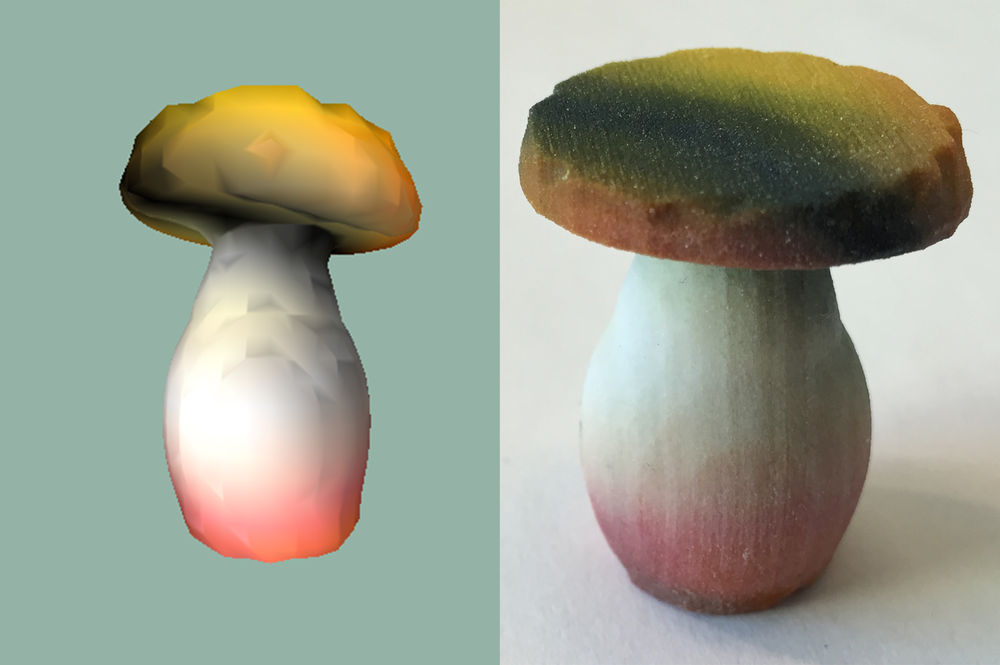
An experiment by researchers at the University of Copenhagen attempted to persuade an A.I. to create a 3D model from scratch. It did.
It’s a peculiar approach that was used in this experiment, and is very similar to “genetic algorithms” in A.I. research. Here’s how it worked:
- The A.I. creates a random shape
- Images of the shape are presented to Google’s deep neural network to see how well it “registers” against existing images and “scores” it
- Multiple variations of the shape are generated and scored in the same way
- Poorly scoring variations are discarded; higher scoring variations are then slightly mutated
- Over a huge number of iterations, the “random” shape gradually “evolves” into something the deep neural network “likes”
The result of the experiment is shown at top. It appears to be a type of mushroom.
Such 3D model generation requires a spectacular amount of computing power to generate the 3D model literally millions of times to arrive at the result, suggesting that this is really impractical.
Worse, the scoring system literally directs the A.I. toward an existing image, so you cannot really get something new. You’ll only get a representation of something that already exists.
And that’s where this experiment falls down. It would be far more impressive if the A.I. could create an entirely new work, not having seen it, nor anyone else.
I guess we’ll have to let the humans continue producing 3D models.
For now.
Via PopSci

